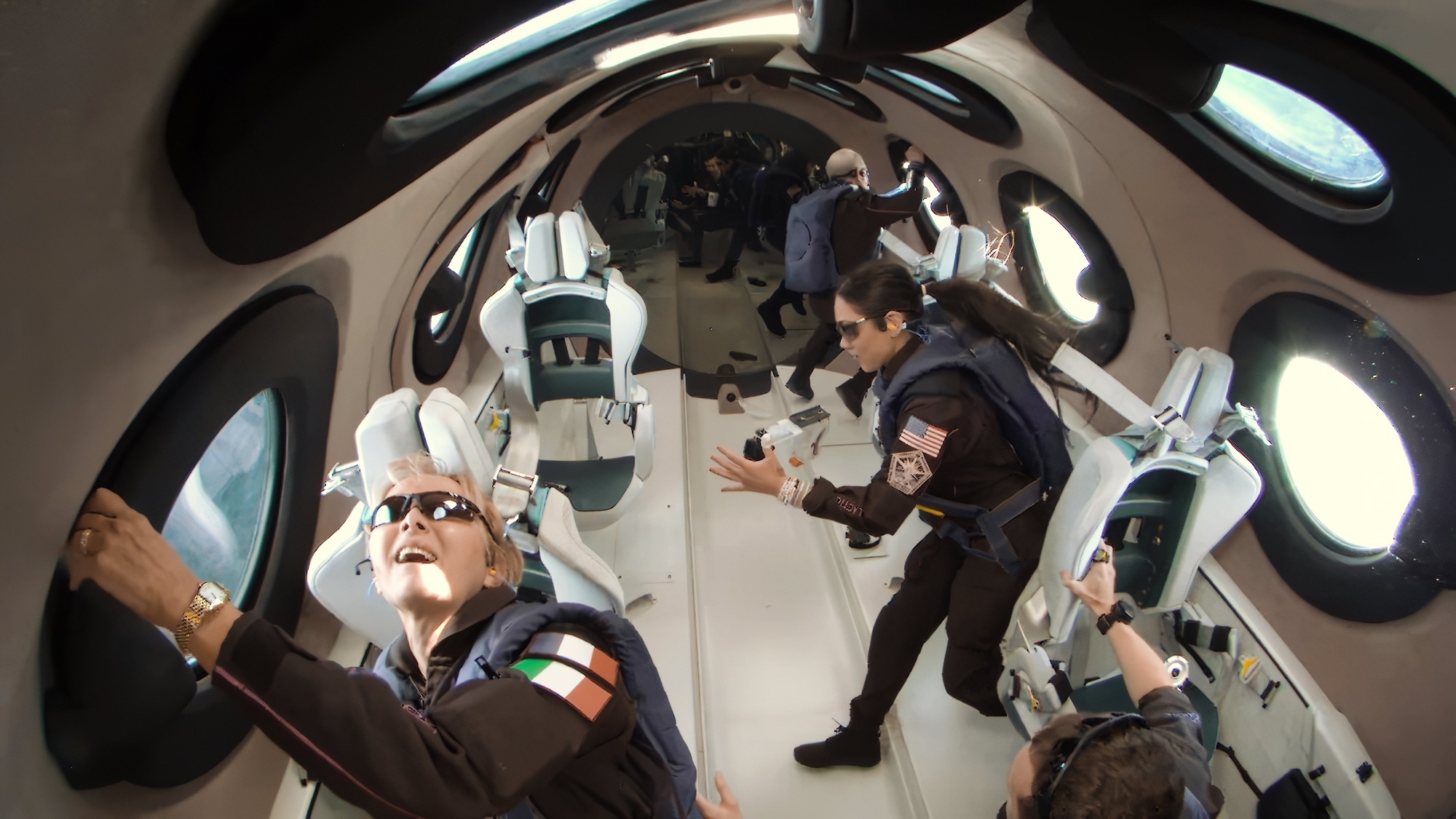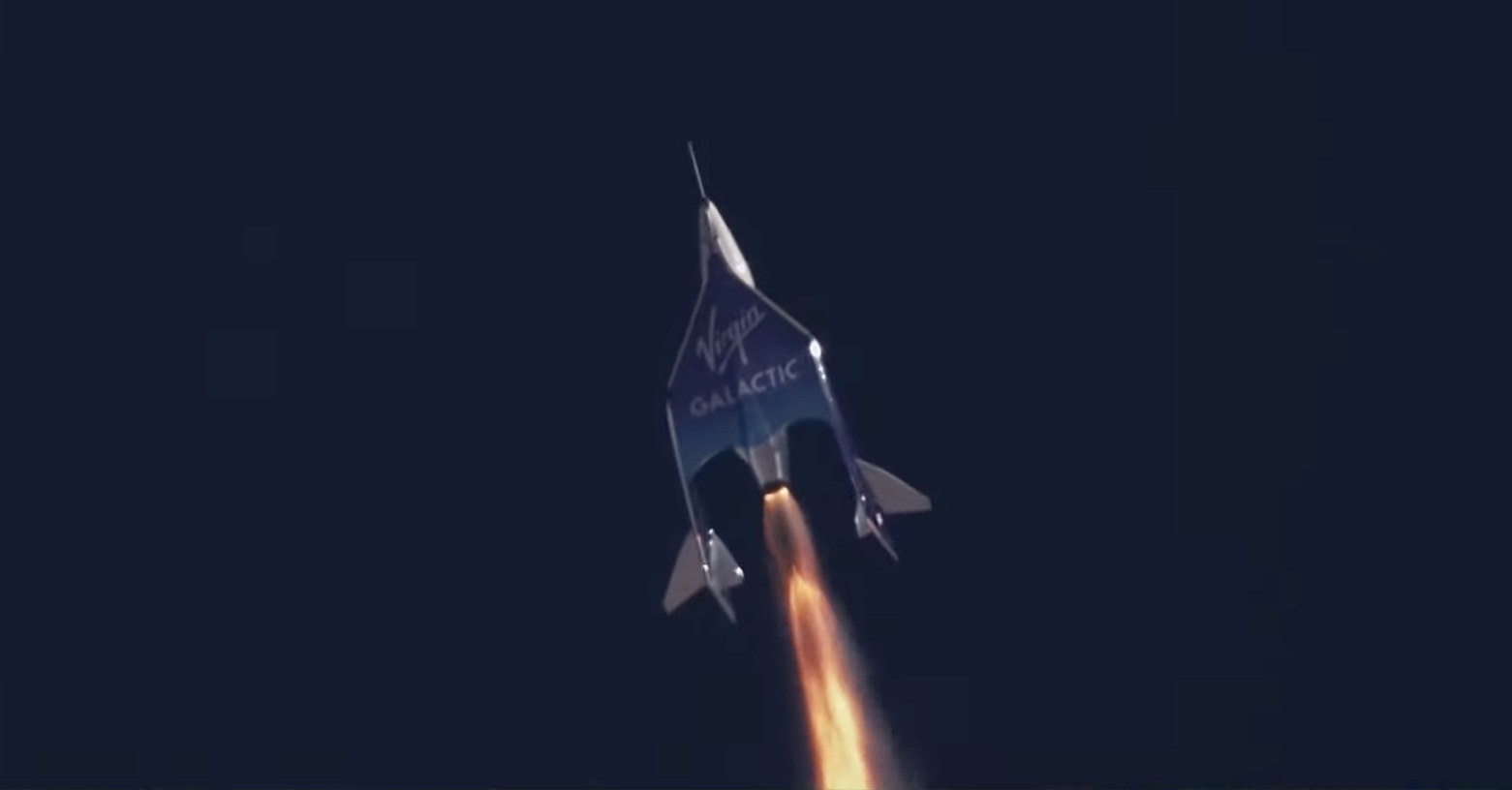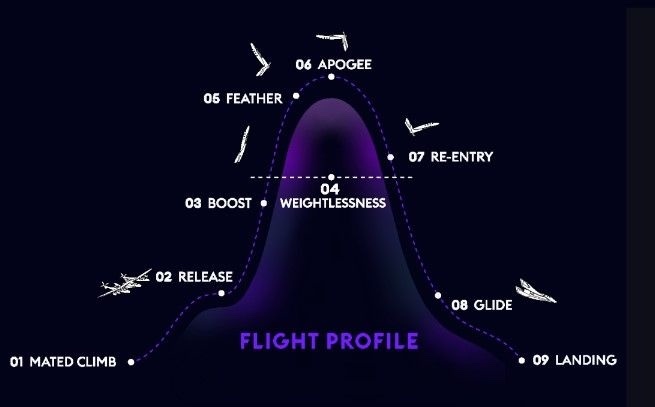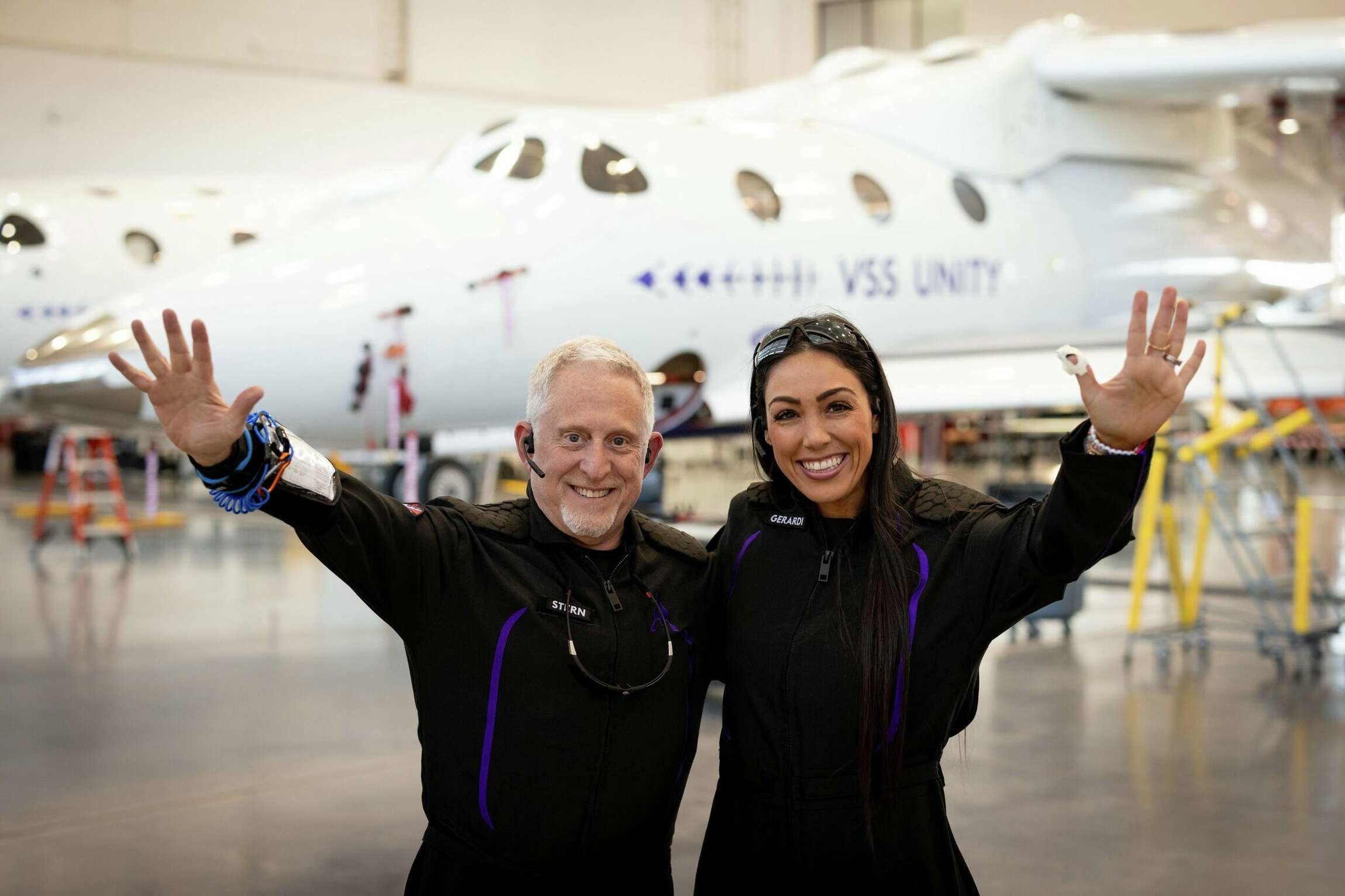Virgin Galactic is set to take off on its fifth commercial spaceflight since it began the service last summer.
Whether or not the passenger names for each flight are made public is a decision made between those ticket-holders and Virgin Galactic, and not every passenger over the last few months has opted to have their name published before their flight. For Galactic 05, two of the three passengers' names were released earlier in October, and the pair happen to already be well known in the space industry.
Alan Stern is a planetary scientist and vice president of the Space Science Division at the Southwest Research Institute (SwRI) in Boulder, Colorado. He has been involved in several NASA research missions throughout his career and currently serves as principal investigator of the New Horizons mission to Pluto and the Kuiper Belt.
Gerardi has worked as a researcher in the aeronautics industry throughout the span of her career. She is a missions operations lead at Palantir Technologies, a payload specialist at the International Institute for Astronautical Sciences (IIAS) and a social media STEM (science, technology, engineering, and mathematics) influencer with a following of nearly 700,000. Through her online presence, she has created a great deal of educational content that has been viewed by millions, and she has authored three books about space.
Stern and Gerardi’s missions were each sponsored by their respective organizations, both of which are focused on research. Their primary objectives during Galactic 05 will be to complete a series of experiments that each will be conducting inside the short window of weightlessness during the apogee of their flight.
The third private passenger was not named in Virgin Galactic’s release, but was specified as someone of Franco-Italian nationality. A Virgin Galactic astronaut instructor, Colin Bennett, will fly inside VSS Unity’s cabin with the trio, with mission commander Mike Masucci and pilot Kelly Latimer at the controls in the cockpit.
Unity’s flight to space begins on the runway at Spaceport America. The space plane stows between the dual cockpits of its carrier aircraft, VMS Eve, commanded and piloted for Galactic 05 by Jameel Janjua and Andy Edgell, respectively. At around 50,000 feet (15,000 meters) in altitude, VSS Unity is released from Eve to burn its rocket motor and complete its climb to space.
Following their short stint on the top of the world, VSS Unity and its crew will return for a landing back at the runway at Spaceport America, followed shortly after by VMS Eve.
Virgin Galactic has not livestreamed its missions since Galactic 02, and now only posts mission updates through the company’s X account, formerly known as Twitter. Thursday’s flight is expected to begin at approximately 9 a.m. MDT (10 a.m. ET/1400 GMT). From liftoff to landing, Galactic 05 will likely last around 1.5 hours.
SwRI scientist Alan Stern and crew mate Kellie Gerardi stand in front of Virgin Galactic's VSS Unity. They're scheduled to fly to space as part of the company's "Galactic5" mission.
Stern, 65, has made a career of studying the heavens and calls the mission the realization of a lifelong dream.
Here’s what you need to know.
Where and when is the launch?
The commercial space flight dubbed “Galactic5” is scheduled to launch from Spaceport America outside Truth or Consequences, New Mexico, at 10 a.m. San Antonio time.
READ MORE: Southwest Research Institute scientist heading to space aboard Virgin Galactic’s VSS Unity
Who else is on board with Stern?
VSS Unity commander Mike Masucci and pilot Kelly Latimer will fly the hour-and-a-half mission that will carry Stern and his crewmates, Kellie Gerardi, a payload specialist and bioastronautics researcher for the International Institute for Astronautical Sciences, and an unidentified private astronaut of “Franco-Italian nationality,” to an altitude of nearly 56 miles.
Is it a rocket launch?
No. Virgin Galactic’s operation differs from other types of space flight. Instead of lobbing a capsule or shuttle directly into space atop a rocket, it’s carried aloft on an airplane known as VMS Eve.
At an altitude of 50,000 feet, VSS Unity is to separate from the mother ship, ignite its rocket motor and fly straight up at speeds reaching three times the speed of sound. The crew will experience several minutes of weightlessness as the spacecraft flies along its parabolic trajectory.
What happens then?
While in zero gravity, the craft does a feather maneuver, essentially a back flip, to reorient the craft. This allows the crew to see Earth from the cabin windows before VSS Unity reaches a belly-down orientation for re-entry. Then the craft glides back through atmosphere and lands back at the spaceport.
How can I watch?
There will not be a public live stream of the mission, but Virgin Galactic social media channels will have live updates. Those include its feed on X, on Facebook and Instagram. It will also be sharing updates on its YouTube channel, and those platforms already have images and information on Stern and the flight.
You can also get updates on the flight here at express-news.com.
Is this Stern’s first space flight?
Going to space is the realization of a lifelong journey for Stern, 65, who’s had a long career studying the heavens.
A former NASA associate administrator, he’s a planetary scientist and associate vice president of SwRI’s space science division working out of the institute’s Boulder, Colo., office. He’s also the principal investigator on NASA’s New Horizons mission that’s exploring Pluto and Kuiper Belt, and he’s had roles in 30 different space missions.
Is he just along for the ride?
No, he’ll be working. While on VSS Unity, Stern will conduct a space physiology experiment and train for a future flight where he’ll use the Southwest Ultraviolet Imaging System, a sort of telescope, to observe stars and other objects in space.
He’s been in final preparations for the mission since arriving Saturday in Las Cruces.
What has Stern said?
Stern, Virgin Galactic’s “Astronaut 020,” is documenting his journey in a blog called “My Suborbital Life” at the NASAwatch website.
“To be honest, I have wanted to fly aboard space missions since I was a kid growing up in awe of the Apollo program,” he wrote in one post. “As a young engineer, and then as a young scientist, I did everything I could think of to make myself a top candidate to be a NASA astronaut.”
Over the years, he applied six times to be a NASA astronaut, but wasn’t selected.
“It’s hard for me to process how long I have held this dream and how much effort, most of it unsuccessful (or at best preparatory), that I‘ve invested to realize it,” he wrote. “And now it’s truly surreal to write that I am flying on the very next human spaceflight mission.”
How many times has Virgin Galactic been to space?
Galactic5 will be the company’s sixth space research mission and its second this year. Sir Richard Branson, the company’s founder, flew on its first fully crewed flight from Spaceport America on July 11, 2021.
Less than 700 humans have escaped Earth’s atmosphere to reach space. Commercial space companies like Virgin Galactic and Blue Origin are making space more accessible. According to Virgin Galactic, about 800 people have signed up for future flights with the company.
Quelle: San Antonio Express News
----
Update: 4.11.2023
.
Virgin Galactic carries researchers on fifth commercial suborbital flight

Participants on the Galactic 05 flight by Virgin Galactic's VSS Unity vehicle carry our research and other activities during the brief weightless phase of the Nov. 2 flight. Credit: Virgin Galactic
WASHINGTON — Virgin Galactic completed its sixth and final suborbital spaceflight of the year Nov. 2, flying two researchers and a private astronaut.
The company’s VSS Unity spaceplane took off from New Mexico’s Spaceport America at 9 a.m. Eastern, attached to the VMS Eve mothership aircraft. Unity separated at about 9:45 a.m. Eastern, igniting its hybrid rocket motor to fly to a peak altitude of approximately 87.2 kilometers and top speed of Mach 2.96. Unity glided back to a runway landing at Spaceport America nearly an hour after takeoff.
The flight, designated Galactic 05 by the company, was its fifth commercial spaceflight since late June, and the sixth overall this year when including a company test flight in May. On board were two researchers, Kellie Gerardi and Alan Stern, and a space tourist, Ketty Pucci-Sisti Maisonrouge.
Stern, vice president at the Southwest Research Institute (SwRI) and a longtime advocate for suborbital research, flew on Galactic 05 primarily as a training mission for a future NASA-funded research mission on VSS Unity. He tested a biomedical harness and a mockup of a camera.
Gerardi flew on Galactic 05 sponsored by the International Institute for Astronautical Sciences (IIAS). She conducted three experiments in fluid dynamics and biomedical research that had been tested previously on parabolic flights operated by the National Research Council of Canada.
In an interview after the flight, both said they were able to complete their experiments during the few minutes of microgravity on the flight. Gerardi, who said she has flown on hundreds of parabolic aircraft flights that provide much shorter durations of weightless, said she was “pleasantly surprised” by the quality of the microgravity on Unity.
Stern, in an article he wrote before the flight, provided a detailed timeline of what he planned to do in those three minutes. “I got everything done,” he said afterwards, although a couple minor issues caused him to fall behind that timeline at points. “It was kind of a wavy line around the straight line of the script.”
The experience, he said, was valuable for him for his future suborbital research flight, and he believed other researchers would benefit from training flights. “Funding people to go on training flights is risk reduction,” he said. “Your batting average is going to be way higher on flight two versus flight one.”
Gerardi said she learned a lot from both the flight itself and planning for it, such as optimizing procedures and experiment designs. IIAS is working to arrange another flight with Virgin Galactic.
There were a few moments for the two researchers to enjoy the flight. “I was so task-oriented on my science payload that it wasn’t until the payload was secure that I was able to look out the window,” Gerardi recalled, and was stunned by the view. “You could see the Earth as a planet. It was really profound.”
The third customer on the flight, Maisonrouge, was an early “Founder” customer of Virgin Galactic who, according to a company biography, was fascinated with space since watching the Apollo landings as a child. As with other recent Virgin Galactic flights, the company disclosed her identity only after landing.
Unity was commanded by Mike Masucci with Kelly Latimer as pilot and astronaut trainer Colin Bennett in the cabin. Virgin Galactic previously said that, starting with Galactic 06, it will not fly an astronaut trainer, freeing up that seat for a fourth customer.
That next flight will take place in January, the company confirmed, after an annual maintenance period for the vehicles. Virgin Galactic will release its third quarter financial results after the markets close Nov. 8.
Quelle: SN




